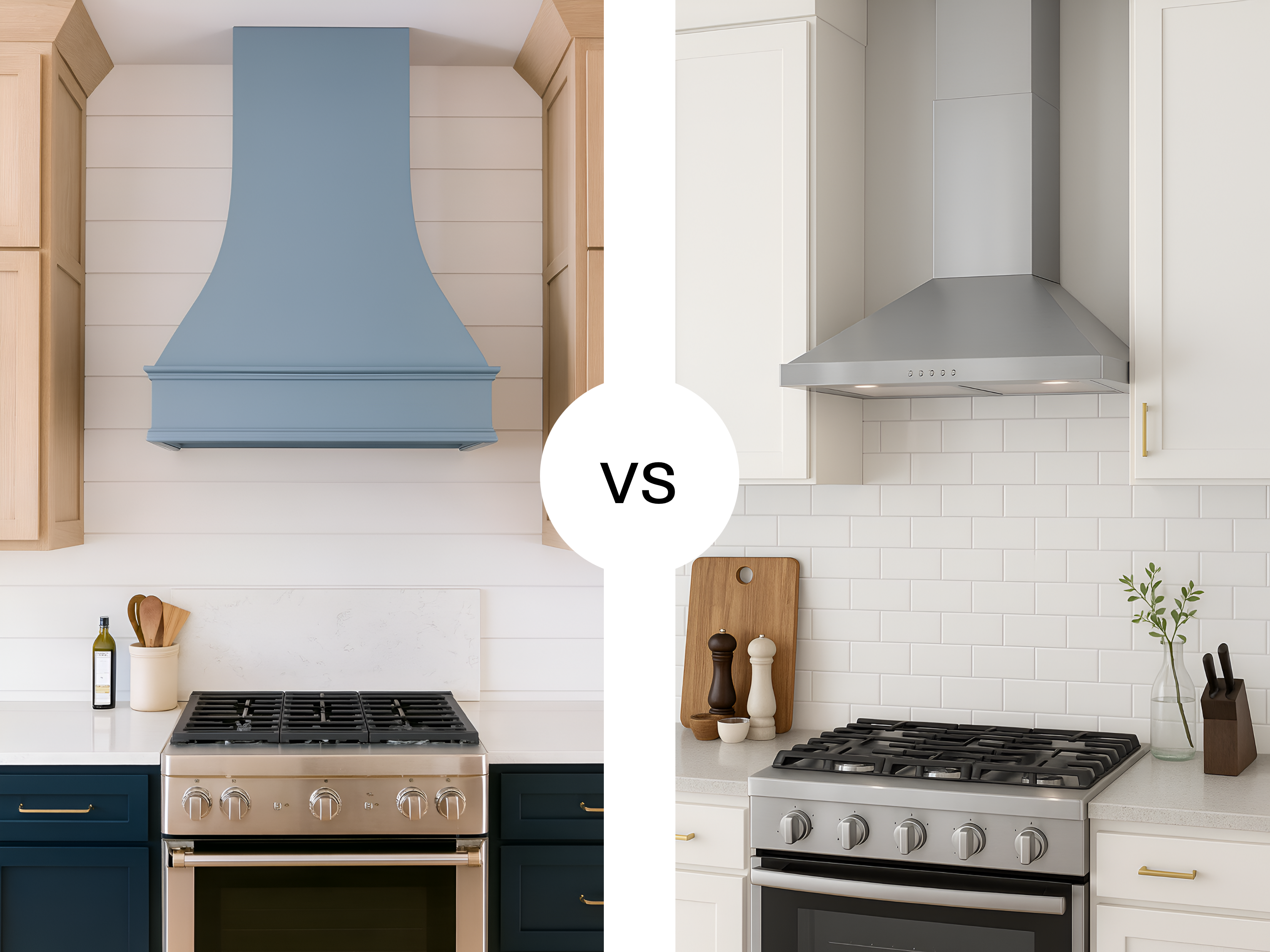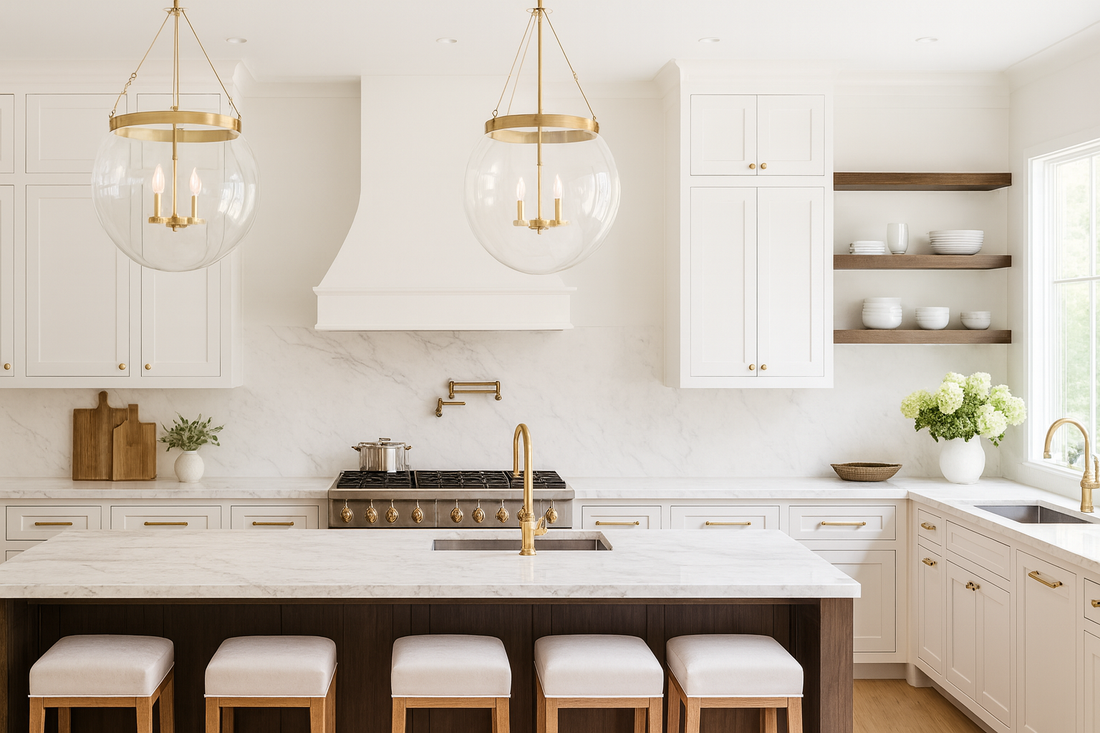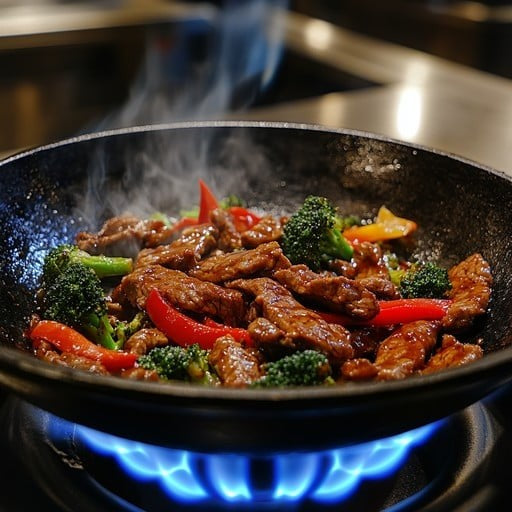When it comes to designing a kitchen, the range hood is often the unsung hero. It keeps the air clean, removes smoke and grease, and adds a focal point above your stove. But once you’ve decided you need one, the big question is: Should you choose a wood range hood or a stainless-steel range hood?
Both styles have unique advantages — from durability and maintenance to aesthetics and cost. In this guide, we’ll compare wood hoods vs stainless steel hoods to help you decide which is the right fit for your kitchen.
Why the Range Hood Matters
Before diving into materials, let’s quickly cover why a kitchen hood is so important:
- Air Quality: A good stove ventilation hood removes smoke, steam, and airborne grease
- Comfort: Prevents excess heat from building up
- Design: Serves as a visual anchor in the kitchen
- Value: Adds resale appeal and modern functionality to your home
Whether you choose a wood hood vent or a stainless hood vent, both must perform well as part of your kitchen ventilation system.
The Case for Wood Range Hoods
Wood range hoods bring a sense of warmth, texture, and tradition to the kitchen. They’re especially popular in farmhouse, rustic, and transitional kitchens.
Aesthetic Appeal
- Natural beauty of wood complements cabinets
- Can be stained, painted, or finished to match existing décor
- Works well with custom range hood covers for a seamless look
Customization
- Endless design possibilities: arches, trims, decorative molding
- Can conceal mechanical parts with a cabinet range hood design
- Perfect for custom kitchen hoods where you want unique craftsmanship
Cost Considerations
- Price varies depending on wood species and craftsmanship
- Custom wood hoods can be more expensive than standard stainless models
- DIY and range hood cover kits available for budget-conscious remodels
Maintenance
- Wood is more porous — requires sealing to resist moisture and grease
- Regular cleaning needed to prevent staining
- Painted finishes may chip over time
Best for: Homeowners who want a custom, designer look with flexibility in finishes.
The Case for Stainless Steel Range Hoods
Stainless steel hood vents have been the industry standard for decades. Known for durability and easy maintenance, they fit seamlessly into modern, industrial, and minimalist kitchens.
Aesthetic Appeal
- Sleek, commercial look
- Matches stainless steel appliances for consistency
- Pairs well with glass-top ranges and modern lighting
Performance & Durability
- Resistant to heat, grease, and moisture
- Easy to wipe down with basic cleaners
- Available in wall-mount, chimney, and under-cabinet designs
Cost Considerations
- Widely available at all price points
- More affordable options compared to custom wood hoods
- Premium stainless models with high CFM fans can be expensive
Maintenance
- Easy to clean with stainless-safe cleaners
- Can show fingerprints and smudges — requires polishing
- Doesn’t require sealing or painting like wood
Best for: Homeowners seeking low-maintenance, durable, and modern kitchens.
Head-to-Head Comparison
| Feature | Wood Range Hood | Stainless Steel Range Hood |
| Style | Warm, customizable, farmhouse / traditional | Sleek, commercial |
| Durability | Requires sealing & care | Highly durable, resistant to moisture |
| Cost | Custom options can be expensive | Wide price range, budget-friendly options |
| Maintenance | Needs regular cleaning & upkeep | Easy to clean but shows fingerprints |
| Customization | Highly customizable finishes and trims | Limited design flexibility |
Which One Should You Choose?
When deciding between a wood kitchen hood and a stainless steel hood vent, ask yourself these questions:
- What’s my kitchen style?
- Rustic or farmhouse → wood hood
- Modern or industrial → stainless steel hood
- Do I want customization?
- If you want paint or stain to match cabinetry → wood
- If you want a timeless, appliance-matched look → stainless
- How much maintenance am I willing to do?
- Wood requires sealing and care
- Stainless requires less upkeep but shows smudges
- What’s my budget?
- Stainless hoods are available at all price points
- Custom wood hoods are often a premium investment
The Best of Both Worlds: Hybrid Designs
Many homeowners today are choosing hybrid range hoods that combine materials. For example:
- A stainless steel hood vent wrapped in a custom wood cover
- A painted wood hood with a metal trim accent
This allows you to enjoy the durability of stainless steel with the warmth of wood, giving your kitchen a truly unique style.
Final Thoughts
Both wood range hoods and stainless steel range hoods offer excellent performance and style. The choice comes down to your personal aesthetic, budget, and maintenance preferences.
- Choose wood if you want custom designs, farmhouse charm, or a one-of-a-kind statement piece.
- Choose stainless steel if you prefer durability, modern appeal, and easy maintenance.
- Or, mix both materials for a custom hybrid range hood that blends warmth and strength.
- No matter which option you choose, the right kitchen hood will enhance your space, protect your home, and make cooking a more enjoyable experience.
Browse our collection of wood range hoods with stainless steel liners to find the best fit for your kitchen.





